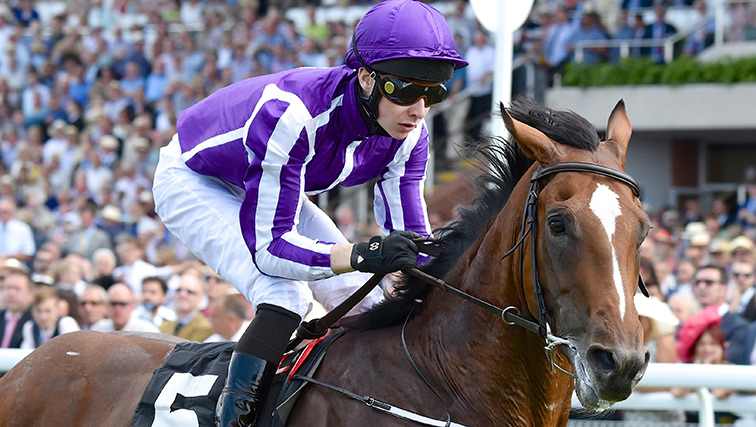New Microchipping Rule Beneficial to Racehorse Aftercare

Horses like Highland Reel, who races in Europe, are already microchipped before starting their racing careers. (Photo by Eclipse Sportswire)
On Sunday at The Jockey Club’s Round Table conference, it was announced that a new rule had been passed that all Thoroughbred foals will be microchipped, beginning in 2017.
This is good news for the racehorse industry as a whole with America now using the same system of identification as many countries around the world, but identifiers at the track won’t be the only people benefiting from this new requirement. It isn’t unusual to see those involved with off-the-track Thoroughbreds using social media to post pictures of faded tattoos in an effort to identify a horse.
Stacie Clark, the Thoroughbred Aftercare Alliance’s (TAA) operations consultant, believes that horses being microchipped will cut down on horses not able to be identified due to unreadable tattoos.
“The benefits of microchipping Thoroughbreds when they are registered will be a wonderful asset to the aftercare industry. Being able to identify horses and keep track of them will assist everyone trying to identify Thoroughbreds in aftercare facility,” she said. “As a Thoroughbred gets older, over time their tattoos become difficult to read and accurate identification is often difficult. Microchipping Thoroughbreds will eliminate this challenge of properly identifying horses that are in aftercare facilities.”
THE MICROCHIPPING FORM AND NEEDLE USED TO INSERT MICROCHIP IN ANOTHER COUNTRY
Photo courtesy of Wikimedia Commons/Izvora
Aftercare programs like New Vocations includes a horse’s tattoo number on all records. With the tattoos fading over time, the program can sometimes find it hard to properly identify the horse. Program Director Anna Ford thinks that not only will the microchip make it easier to identify horses coming into the program but also those that it adopts out and checks on through the years.
“Reading tattoos is often hard and it’s important for us to have the accurate tattoo number for our records so we can properly identify each horse,” Ford said. “As a horse gets older it is even harder to read their tattoo, so having a microchip will make it much easier to identify the horses throughout their life as well.”
One downside to microchipping is the cost that aftercare programs will have to pay to have a vet come out to read a horse’s microchip or to buy one of the microchip readers for its program. But Ford said that the added expense would be worthwhile.
“The only challenge may come to your average equestrian who most likely won’t have a microchip reader. However, I would assume many veterinarians will and could provide the service. Once the policy is enforced, New Vocations will have to purchase readers for each facility, but it will be worth it and will keep our records more accurate,” she said.
And while the TAA doesn’t have a facility of its own where it houses OTTBs, Clark thinks that microchipping will also help that program as well.
“It is a goal of the TAA to accurately identify all the horses that are in every facility of every organization. Microchipping will greatly assist this at every facility inspection,” she said.
American-bred horses with microchips probably won’t be seen in aftercare programs until at least 2018 but it will be worth the wait for those who spend their lives trying to identify Thoroughbreds in need of a new home.
